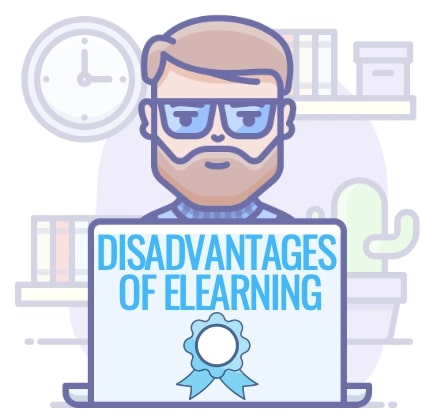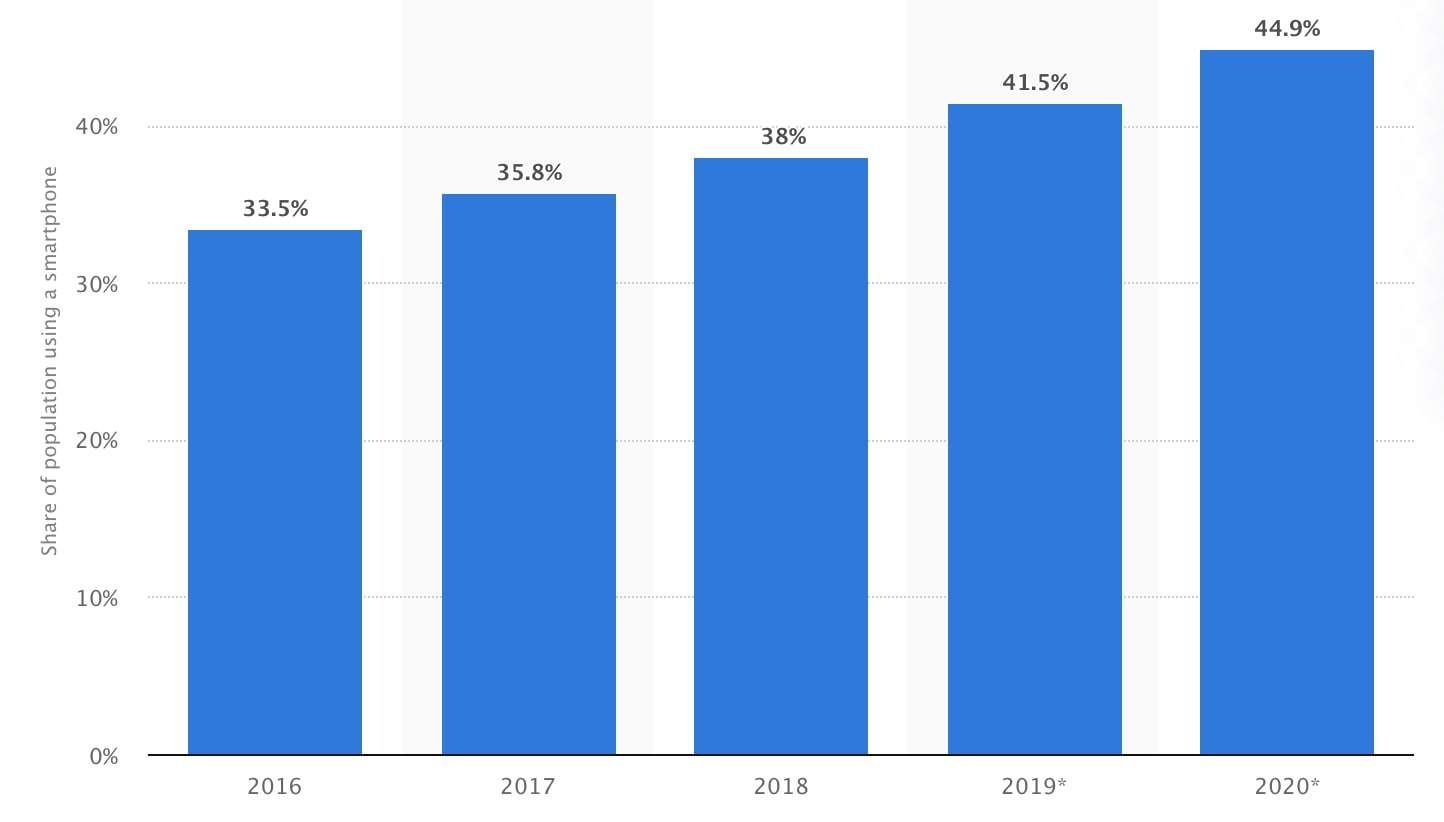17+ Disadvantages Of eLearning You Need To Know

 While online learning is a high growth industry with a global reach, there still are some disadvantages of eLearning you should know about.
While online learning is a high growth industry with a global reach, there still are some disadvantages of eLearning you should know about.
In this guide, I cover some cons of eLearning that include the need for computer literacy, lack of teacher interaction, time management, and many more.
To keep an even balance, I have also included some ways in which the eLearning sector is adapting and combatting these challenges. Let’s begin!
17+ Disadvantages Of eLearning You Should Know
1. eLearning Can Be Inaccessible By Older Generations
One of the major and most common downsides of eLearning is that it can be out of reach for older generations. This is primarily due to the fact that only 68% of Baby Boomers (55-73) own a tablet, smartphone, or computer.
As for the Silent Generation (74-91), device penetration is only 40%. For comparison, 93% of Millenials and Gen Xers own an internet compatible device. So without a device, many eLearning recourses and platforms are simply out of reach.
To combat this, online course providers like Lynda (now LinkedIn Learning), have partnered up with 10,000’s of libraries globally to provide free online courses for library cardholders.
2. Certain Degrees & Fields Are Out Of Reach
While eLearning covers a huge range of degrees, courses, classes, training, and lessons across multiple sectors. There are certain courses and fields that simply cannot be taught online due to the practical components.
As an example, many fields such as automotive, dentistry, carpentry, hairdressing, cooking, and child care have a difficult time teaching hands-on lessons over the internet.
To meet this challenge, many local colleges and universities now offer online theory lessons in conjunction with practical components. This allows students to attend practical lessons while still maintaining a flexible online learning experience.
3. Some eLearning Platforms Lack Accreditation

With many educational websites and eLearning platforms, it’s very common for them to supply a certificate of completion to students.
While this is a great sign of achievement and can help job seekers. In many cases, these certificates hold no weight or accreditation, which may give a false sense of accomplishment.
However, more and more eLearning platforms are seeking accreditation for their courses so they can attract new students and learners. Some MOOCs that prove accreditation include Kaplan University, edX, eCornell, PMI, and Coursera to name a few.
4. eLearning Can Lack a Student Community
Another disadvantage of eLearning is the lack of student bodies, student communities, and clubs. Those who have attended a physical campus, often speak fondly of their experiences joining different clubs and meeting new people.
However, when it comes to online learning, this sense of community is very hard to replicate in an online setting. Generally, many educational websites do offer forums and community threads, but these are often poorly used.
While physical interaction can never be replaced, eLearning platforms are starting to add video discussions for students, slack communities, and “remote catch-ups”. While this may not be perfect, it is heading in the right direction.
5. Time Management Can Be Hard With eLearning

When we attended physical classes, lectures, and training, there is a set schedule and time commitment already laid out for students. This makes time management “easier” as there is more of a structure and timeline to commit to.
eLearning on the other hand is extremely flexible as is best suited to revolve around one’s schedule, lifestyle, and work. While this can be seen as a positive, it can become a major disadvantage for those who struggle with time management.
As this is a frequent challenge of online learning, many course providers now allow for the ability to allocate time slots with reminders to keep students on top of their learning progress.
6. Online Learning Courses Are Primarily In English
While only 20% of the global population speaks English, around 80% of all online courses and classes are in English. This big disparity in numbers keeps students, especially developing countries out of reach from online education.
To combat this, many online course providers are starting to support other languages such as Mandarin, Spanish, Portuguese, and Hindi. Typically, this bilingual support comes in the way of voice-overs or subtitles in the native language.
7. Overabundance In Choices Lead To No Action
In marketing, there is a common term called analysis paralysis, which translates to consumers unable to make a choice when confronted with too many options. With eLearning, the same problem applies.
As of writing this, there are 100’s of different online education websites that provide very similar courses, with new platforms entering the market on a monthly basis.
This issue is actually one of the reasons why I decided to make this particular website. With an overabundance of choices, it’s good to find resources that compile the top platforms for a given field.
8. Stable Internet Connection & Computer/ Mobile Is Needed

When deconstructed, eLearning means “Electronic Learning“. So at its core, an internet compatible computer, tablet, or cellphone device is needed to undertake an online course or classes.
Surprisingly, data suggests that only 49% of households globally have a computer in the household, and 44% for smartphone devices. So for over 50% of the global population, eLearning is not accessible from home.
However, these same reports also show that internet penetration is growing 5-10% annually. So more people in developing countries will soon have access to more online education resources.
9. Online Learning Lacks Face-To-Face Teacher Interaction
One of the most important learning methods for students is to get feedback, critique, and thoughts from teachers.
Typically, this dialogue is uncommon in the eLearning industry as one single course may be taken by 10,000’s of students. So from a teacher’s point of view, this is unmanageable.
While this is a very hard issue to tackle, many course providers are not supporting live Q&As where pupils can submit questions beforehand and get feedback from teachers, professors, and trainers.
10. Cheating Is Harder To Monitor & Detect

With the nature of eLearning and taking courses online, there is no physical attendance one has to show when taking assessments, tests, exams, and training. Because of this, online courses can easily be duped by outsourcing, third party help, and guided assistance.
To combat this, many MOOCs “Massive Open Online Courses” and LMS “Learning Management Systems” now use AI to detect cheating, and even live video connections to ensures students and workers are actually present.
11. eLearning Can Lack Practical Assessments & Training
While eLearning is a phenomenal tool to acquire new skills, there is only so far an online course can take you. Take cooking and nail technicians for example.
Students can learn the theory of seeing others do practical training. But without doing it with your own hands. It simply is not the same.
For many fields, this is simply a disadvantage of eLearning that is here to stay. However, there are online learning platforms like Bluprint that send the materials to students so they can follow along at home.
12. Students Can Become Isolated When Learning Remotely

Another con of eLearning is that students can become lonely and isolated when learning remotely at home. This has also compounded itself with the rise of a pandemic which has forced millions of students to learn by themselves.
While this is a hard issue to fix, many eLearning platforms now include student discussion boards, live video meets, slack threads, and “online clubs” where students can interact with peers.
13. Online Courses Can Be Inconsistent
With a traditional college or university, there are strict frameworks and curriculums that teachers and professors have to uphold. This abidance tends to deliver a more consistent learning experience for students, regardless of what campus they attend.
On the other hand, many eLearning platforms don’t have to adhere to these same standards, as they are not typically backed by an educational or government institution.
While many educational websites aim to teach new skills, rather than degrees, this is something that is not always necessary. However, some platforms do provide online degrees that follow the same curriculum as a university.
14. eLearning Requires Strong Discipline

One of the major advantages of eLearning is that it’s completely flexible and can revolve around one’s lifestyle, work, and schedule.
However, for some, this can also be seen as a big disadvantage as this requires strong discipline to meet deadlines, submit work, and continue with a course.
To counter this, online educational websites are slowing moving away from courses that require deadlines and time restraints. Instead, students now have the ability to stop completely for weeks, and even months, then pick up where they left off.
15. eLearning Can Lack Spontunaity
For those that have attended a face-to-face lecture, they can be incredibly boring, and in some cases, extremely stimulating. The later is usually when a lecturer diverges from the normal curriculum and delivers an idea in a unique way that engages students.
While this is hard to replicate in an online setting, and with prerecorded courses. Some of the larger eLearning institutions are moving to smaller classes with live open discussions throughout a class or lecture with a teacher.
16. Computer Literacy Is Needed
Even though eLearning is a tool designed for the masses, it also has its shortcomings as it requires some computer knowledge and literacy. Which many don’t have, or find trouble learning.
Fortunately, the online learning industry is now implementing simple and easy to follow UI/UX which makes it easy to learn and interact with. Some platforms are also utilizing gamification which helps to make the learning experiences more intuitive.
17. Certain Online Courses Can Be Expensive
When compared to a traditional education pathway, eLearning is still more cost-effective and typically results in a better return for students. However, for many third world and developing countries, a “cheap $200 course” can be impossible to obtain.
To combat this, non-profit eLearning platforms like Khan Academy, Code.org, and FreeCodeCamp, aim to provide free online education to every person, regardless of gender, race, background, and income.
Conclusion
In conclusion, eLearning definitely does have its drawbacks and disadvantages. However, with increased demand and competition in the industry. This is forcing the online learning industry to adapt faster and provide a better experience for a larger global audience.
